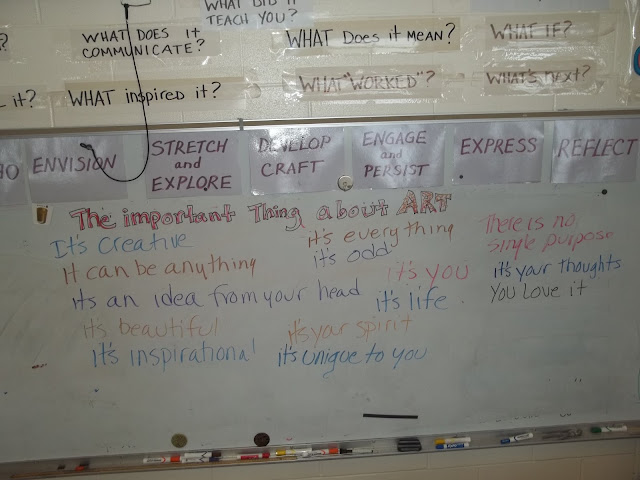There has been some interest (by alert art teachers) in the idea of Art Traps - here is one I set just now to prepare for the afternoon's 6th grade class.
 |
| "Watercolor" paint made from soaking old, used up watercolor markers |
I think of an art trap as an invitation - "Come, try this out -it's all ready for you." I set the table with care, trying to think of helpful details (in this case, taping paper to boards and providing the correct brushes for watercolor painting.)
The idea is to temp learners to try something they might not have thought of otherwise, to nudge them into sampling a new media or tool, to bypass the decision-making, or set-up, that might prevent some from getting down to it. It's about removing barriers - sparking interest.
Now I wait and see if anyone falls in to my trap.
UPDATE:
I just realized that the watercolor trap (above) is the second trap I have set today - I set the one below in the hall outside the art studio when I got to school, and have caught quite a few passers-by already.
After the loom was in the hall for a few days, two weavers started to make a "bride and Groom", then a "flower girl" and today - a "Mermaid Goddess"! (See below)
 |
| "Bride & Groom" at right, "FlowerGirl in center (pink hat), "Mermaid Goddess far left" |



































